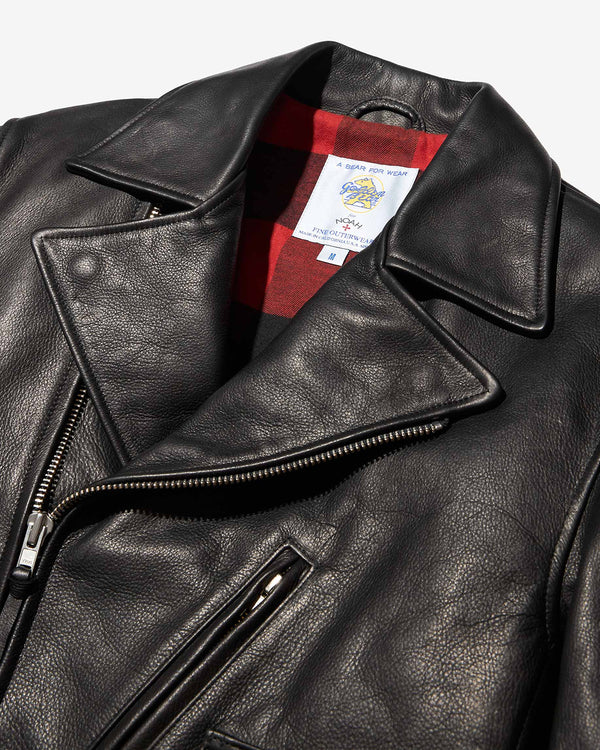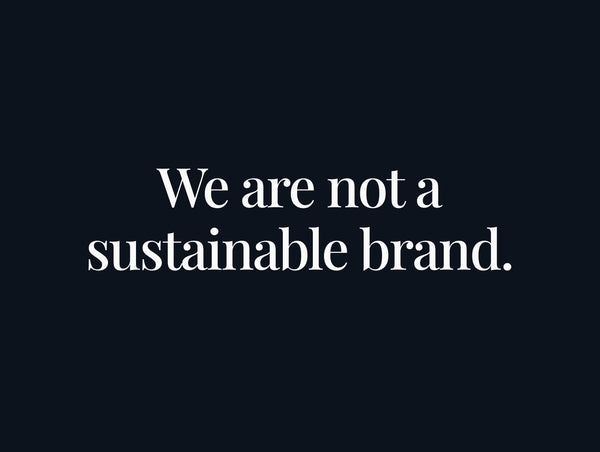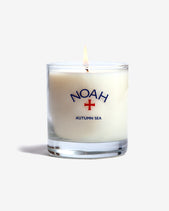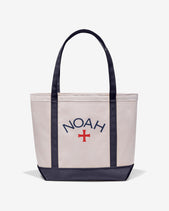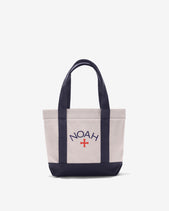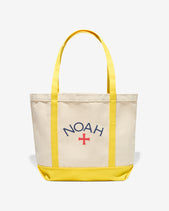
I've had several people asking about the price of some of our garments. One instance happened when we were opening our Dover Street location in London. This kid basically walked straight up to me and asked me why one of our jackets costs so much. In his hand, he held a taped seam, water-resistant jacket that I had taken part in making several years ago. He loved it. He knew his shit, and said: “This jacket has taped seams and cost less than the Noah jacket, which doesn’t have taped seams. Why is that?” At this point, I was salivating at the chance to talk about it.

In short: The things we make generally will last longer than other items that are designed to expire quite quickly. Cloth often determines the life of a garment. Good denim lasts longer before blowing out. High quality shirting will take longer to fray or tear. The old saying "you get what you pay for" is very, very real.
I’ll share with you what I shared with him. First off, a taped seam jacket is overkill for everyday use walking around cities like London, New York, or Paris. Those of us running from one place to another spend very little time actually in the rain. In addition, the Noah jacket has no shoulder seams, which is where a large part of leakage can occur. The fabric on the Noah jacket is not a fancy, name-brand waterproof fabric, but again, this is pretty unnecessary for those of us not spending extended periods of time in a direct downpour. But, the fabric we use is a very high-quality cotton/nylon blend with a high degree of water repellency—more than enough for average use. I went on to explain the basics of fabric, shipping, and manufacturing costs—everything that goes into making a garment. This is where the way we work really matters.

We buy from reputable suppliers making high quality textiles in countries with reasonable environmental laws. That means they cost more, but they contribute a bit less to environmental destruction. If this is a priority for a consumer, then there is real value there. If not, I believe it is only a matter of time before it does become a priority for everyone, and we’ll see you all eventually. Next, we manufacture in countries that have fair labor laws and are known for producing high-quality garments. In the case of this particular jacket, that country is Italy.
Working in clothing production in Italy is a pretty good job. Italian workers enjoy a livable wage, real lunch breaks, more vacation time than the average American. The factory we use is family-owned, run by a father-and-son team, and partially run on solar energy. All of these factors add up and mean we pay more to make the jackets—we are OK with this. We place real value on people having a nice life, and are willing to grow our business slowly in order to make sure others live well. It’s a fundamental building block of our business. We are not motivated entirely by financial profit. I could make more money by producing in places with less positive labor situations, but I would be just like every corporation out there that puts profit before people. Make no mistake about it: Every time you buy something that is made cheaply, it means someone else is picking up the cost. You save money because someone else is making less, and perhaps working in conditions that no human should suffer. We have become accustomed to pricing structures that are, quite simply, lies. The pricing we have become accustomed to—whether for garments, food, or technology—is mostly based on finding the cheapest manufacturing on the planet. This means moving into underdeveloped countries and taking advantage of the impoverished. Companies will pay workers as little as possible, not maintain facilities, nor offer reasonable work hours, in the name of saving money. All of this is necessary to bring you “affordable” products. If you were to force businesses to account for real salaries, responsible practices, and a respect for the environment, things would look very different. I don't expect all of you to care about this, but I do think it’s important to know in order to make an informed decision. Silence equals death has never been more true.
Lastly, the garment business is primarily a volume business. The more you make of something, the cheaper it is to make. We are a small business, so we produce less things. This means things cost us more to make. We place a high premium on making our customers happy and bringing them unique opportunities to express themselves. We made a total of 72 jackets in 2 colors—36 of each. That is unheard of. Do your research and find out for yourself.
All of this information was relayed to our young friend In London, and he literally turned around and bought the jacket. I wasn't trying to sell him on it as much as I was just trying to respond to his original question: "Why does this jacket cost so much?" I guess I gave him the answer he was looking for.
I hope you have learned a bit, and consider these factors as you shop for anything. Now more than ever, how you spend your money means something. Every purchase is a vote for human rights, environmental responsibility, women's rights, or workers’ rights—just to name a few. Please read the book Blood and Earth, and you'll get a more informed view. Buy less. Buy better. Don't be a mindless consumer. For our part, we will continue to strive to improve and learn. In some ways, we’ve already failed to live up to our own standards, but we will do our best. I’m open to suggestions on how to be better, so feel free to email us, or come in and let me know what we’re doing right or wrong.
Thank you for your time,
Brendon
P.S. If you’re that kid from London, I’ve forgotten your name. I apologize. Send us an email as I’d like to hear how you’re liking your jacket.
The below is a dollar for dollar accounting of what is costs to produce this jacket.

